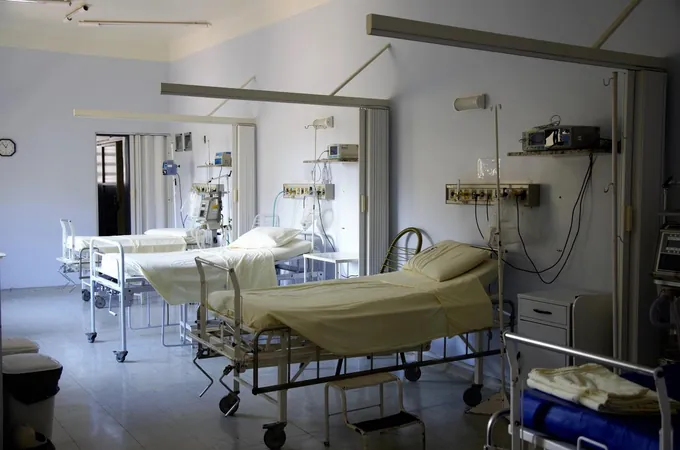
Shocking Study Reveals Understaffing in Hospitals Leads to Higher Infection Rates!
2024-10-10
Author: Sarah
Introduction
A groundbreaking study published in the American Journal of Infection Control has unveiled alarming correlations between inadequate staffing levels in infection prevention programs and a surge in healthcare-associated infections (HAIs). The exhaustive research conducted by the APIC Center for Research, Practice & Innovation highlights a pressing crisis within hospital infection control structures.
Study Overview
The pilot project examined a newly developed online calculator designed specifically for hospitals to assess and optimize their infection prevention staffing based on their unique operational capacities. The findings paint a stark picture: hospitals that are understaffed in this crucial area experienced significantly elevated infection rates, including central line-associated bloodstream infections (CLABSI), catheter-associated urinary tract infections (CAUTI), Clostridioides difficile infections, and infections following colon surgeries.
Key Findings
In particular, the study revealed that 25% of facilities that fell below expected staffing levels reported alarmingly high rates of CAUTI, compared to just 7% of hospitals meeting or exceeding staffing expectations. This evidence underscores the vital role that adequate staffing plays in safeguarding patient outcomes.
Out of 390 acute care hospitals analyzed, an astonishing 79.2% were found to have insufficient infection prevention staffing levels. This over-reliance on outdated metrics—previously relying on a fixed ratio of infection preventionists to inpatient beds—has proven inadequate in today’s complex healthcare landscape.
The APIC Staffing Calculator
The novel online calculator developed by APIC, featuring a predictive algorithm, aims to revolutionize staffing patterns by taking into account key variables such as the complexity of services offered, the presence of specialized units (like emergency departments or burn units), and more. By entering specific data about their facility, hospitals can receive tailored recommendations for optimal IP staffing levels.
Expert Insights
Rebecca Bartles, DrPH, MPH, CIC, FAPIC, the executive director of the Center for Research, Practice & Innovation and lead author of the study, emphasized the calculator's importance. “This facility-specific calculator is a crucial tool for our community, providing hospitals with the means to advocate for essential resources to enhance patient and healthcare worker safety.”
Additional Insights
Key insights from the study also revealed:
- Participating hospitals ranged significantly in size, from a mere eight beds to over 2,000, showcasing the widespread nature of the problem.
- Smaller hospitals, specifically those with fewer than 25 beds, reported having only one infection preventionist per 40 beds, while mid-sized institutions exhibited ratios as low as one IP per 161 beds.
Call for Action
The study calls for urgent action, with APIC president Tania Bubb, Ph.D., RN, CIC, FAPIC, urging hospital leadership to adopt the staffing calculator to comprehensively assess their needs. She argues compellingly that there is an undeniable link between sufficient staffing levels in infection prevention and the safety of patients, emphasizing, “This study lays to rest any doubt about the critical need for appropriate levels of staffing.”
Recommendations
APIC is also advocating for the U.S. Centers for Medicare & Medicaid Services (CMS) and relevant standards bodies to mandate the use of their staffing calculator to ensure that hospitals maintain adequate infection prevention resources. The implications of this study extend far beyond staffing; they highlight the crucial link between investing in healthcare resources and safeguarding patients against potentially life-threatening infections.
Conclusion
As healthcare facilities are challenged with rising infection rates, leveraging innovative tools like the APIC staffing calculator may be pivotal to reversing these troubling trends. The integrity of our healthcare systems and the safety of patients depend on it.



 Brasil (PT)
Brasil (PT)
 Canada (EN)
Canada (EN)
 Chile (ES)
Chile (ES)
 España (ES)
España (ES)
 France (FR)
France (FR)
 Hong Kong (EN)
Hong Kong (EN)
 Italia (IT)
Italia (IT)
 日本 (JA)
日本 (JA)
 Magyarország (HU)
Magyarország (HU)
 Norge (NO)
Norge (NO)
 Polska (PL)
Polska (PL)
 Schweiz (DE)
Schweiz (DE)
 Singapore (EN)
Singapore (EN)
 Sverige (SV)
Sverige (SV)
 Suomi (FI)
Suomi (FI)
 Türkiye (TR)
Türkiye (TR)